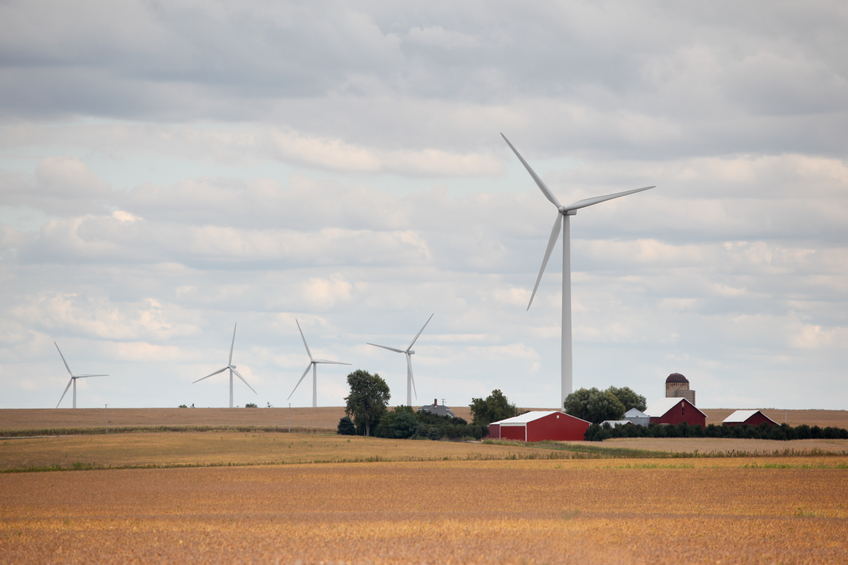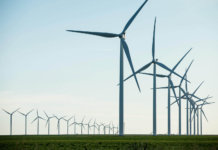‘Tight supplies’ has become a catch phrase when pros in the booming North American wind industry talk about wind turbines, but the phrase can also be applied to the workers qualified to keep these million-dollar machines humming.
In the U.S. and Canada, new technical education programs at the college level have started to address this need. More programs are being conceptualized to fill what could be hundreds of jobs across the continent.
With thousands of wind turbine generators (WTGs) erected in recent years – and thousands more planned – having enough qualified workers available to operate and maintain them is becoming more of a challenge.
Currently, turbine manufacturers or wind farm operators have to retrain existing workers from other sectors of their companies to operate and maintain equipment. In some cases, they increasingly have the option of hiring recent graduates of technical college programs already well-versed in WTG operations and maintenance. While the numbers of graduates can now be counted by the handful – dozens, if not hundreds – will join the workforce in coming years.
Fledgling programs have cropped up across the North American continent or are in the stages of development to lure students within the next year or two. And as more of these programs start to catch on, graduates could have ample opportunities for employment, if recent experience is a guide.
A common thread in the creation of these programs, according to the college professors and others charged with developing curricula, has been the interest and eventual collaboration of WTG manufacturers, such as GE and Vestas, and wind farm operators, like FPL Energy.
‘Graduates have a basic knowledge of mechanics and electronics, allowing them to work in these general fields, but our goal is mainly to prepare wind turbine operation and maintenance workers,’ says Bernard Hamilton of the Centre de Grande-Rivierie in the Gaspe region of Quebec.
Students have the option of obtaining a one-year certificate or a three-year degree.
Nearly 1,000 MW of wind plants are being built by GE now, which offered technical and financial assistance to start the program. And in a region with a depressed economy and provincial government mandates to provide opportunities for local employment, jobs that will pay about C$20 an hour are a welcome sight.
Windlogics
The first class of eight students – with nearly 1,400 hours of class time – graduated last year. The current class of 13 will complete studies in December.
Iowa Lakes Community College in the rural, northwestern part of the state, created an associates degree program with 81 credit hours of study.
Program coordinator Al Zeitz, who formerly worked for GE Energy, was able to fulfill a lifelong teaching ambition when he was hired to implement the program, which was launched in fall 2004.
The two-year program will graduate its first class of eight students in a few months, with two already entertaining job offers and the others expecting to follow suit when they complete a required internship. A one-year diploma option is also available.
A wind turbine was erected on campus about a year ago, and the program's creation benefited from a $500,000 federal grant.
In some programs, student demand may be on the verge of getting ahead of the available space or staff.
At Iowa Lakes, for example, enrollment is capped at 30 students per class due to limited classroom space and the fact that there are only two dedicated faculty members. The second class – graduating in 2007 – attracted 28 students, and enrollment for classes starting in the fall of 2006 was already at 23 students in late February, Zeitz says.
‘We have students from California, New York and Florida,’ Zeitz says, noting that he has fielded calls from across the U.S. as well, from colleges looking to start their own programs.
Programs are being built from scratch, with little opportunity to piggyback onto existing courses, except, for example, classes in math or computers.
Course curricula were developed with extensive sessions at the nearby Storm Lake wind farm. The approach was to find out what the engineers operating the plant needed new employees to know and then develop courses based on that input.
Company input is also essential in a weekend course offered later this month for wind energy technicians and others who work in the industry, to be held March 24 and 25 in Livermore, Calif.
While the university is better known for its research center for wind technologies for blades and other components, and for an alternative energy undergraduate program that includes a wind unit, its expertise has been sought by other academics.
‘We have discussed this type of program with the community colleges, and we're hoping to continue that and help develop a program over the coming year,’ says C.P. ‘Case’ Van Dam, a professor of mechanical and aeronautical engineering at the University of California-Davis and director of the California Wind Energy Collaborative.



